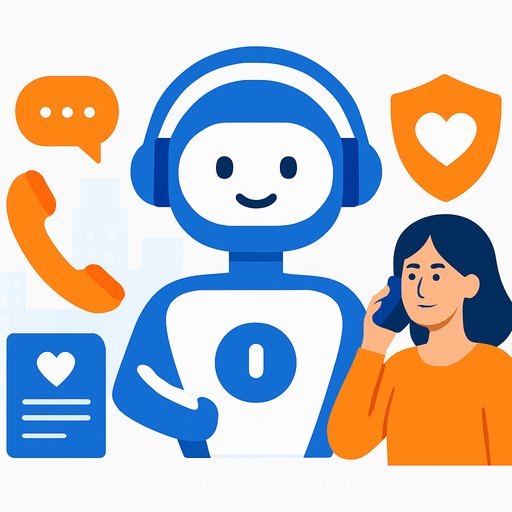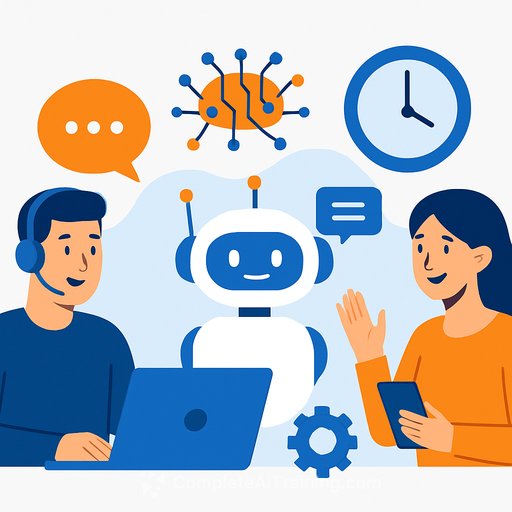No Empathy, No Loyalty: AI's Biggest Challenge In Customer Service
Speed is table stakes. Empathy is the differentiator. New global research from Designit (Wipro's experience innovation company) shows the biggest barrier to blending humans and AI in support isn't accuracy or cost-it's empathy.
56% of professionals across design, creative, and tech say "AI with no empathy" is the top challenge. Other issues follow far behind: misrouted queries (32%), slow human backup (8%), and inaccessible data (4%). If you run a support team, you can feel this on the front lines: customers expect fast and human, not fast or human.
Why empathy matters more than speed
Empathy drives trust, and trust drives loyalty. Customers remember how you made them feel-especially in moments of friction. There's strong evidence that better customer experience correlates with higher retention and spend, which makes the empathy gap more than a UX issue; it's a revenue problem.
Research from Harvard Business Review links improved experiences to higher lifetime value. Translation: getting empathy right pays off.
From personas to "Mindset Archetypes"
Designit's research highlights a shift: move beyond static personas to "Mindset Archetypes"-patterns that capture motivations, values, and situational triggers. The goal isn't more data; it's better framing.
As Designit's senior service/experience designer Anna Milani puts it: "Empathy is the missing link in AI-driven customer support, but the answer isn't more data. It's rethinking how AI is designed."
She adds: "AI designed to understand traditional personas is only useful for telling you who a customer is, not why they're making decisions in the moment or how they might feel in a particular context." Two customers may look identical in your CRM but have completely different priorities and emotional states. Systems need to sense that-and adapt.
What this means for support leaders
- Design for states, not segments: Map the mindsets your team actually sees (e.g., anxious, decisive, skeptical, time-pressed) and the triggers that flip them.
- Teach AI to "read the room": Use intent, sentiment, and context signals to choose tone, reply length, and escalation paths.
- Give agents the right backup: If the model detects frustration or risk, route faster to a skilled human-not the general queue.
- Make data accessible at the edge: Surface policy, account context, and next-best actions inside the conversation, not buried in internal docs.
- Measure empathy explicitly: Track sentiment shift, trust indicators, and "time-to-human" alongside AHT and FCR.
A simple blueprint to blend humans + AI
- Define 5-7 Mindset Archetypes: Example: Reassurance-Seeking, Value-Driven, Time-Sensitive, DIY Fixer, System Skeptic.
- Write response playbooks per mindset: Tone, acknowledgement sentences, proof points, and preferred channel/escalation.
- Train models on cues: Keywords, sentiment markers, history signals, and journey stage to infer mindset with confidence thresholds.
- Route with intent + mindset: Pair complex or high-risk intents with fast human backup. Avoid generic deflection.
- Close the loop: Post-conversation surveys, sentiment analysis, and QA scoring feed back into the model and playbooks weekly.
Practical prompts and patterns
- Empathy-first opener: "I can see this delay is frustrating-let's fix it now. I'll summarize where we are and give you the fastest path forward."
- Proof for skeptics: "Here's what changed since last week, and how we've prevented a repeat. Next check-in is set for 48 hours with a status link."
- Time-sensitive routing: If "urgent/today/flight/meeting" appears, shorten responses, offer one-tap options, and prioritize live handoff.
Metrics that actually map to loyalty
- Sentiment shift: Start vs. end-of-conversation tone.
- Trust signals: Repeat contact within 7 days, promise-keeping score, complaint-to-advocate flips.
- Time-to-human: Especially for high emotion or high value customers.
- Routing accuracy: Reduction in misrouted queries (the 32% problem).
- Resolution quality: Agent QA on clarity, empathy, and policy fit-not just speed.
Proof in practice
Designit has worked with organizations like JFKIAT Terminal 4 and Santander to build experiences that bridge technology and empathy. The pattern is consistent: when systems account for human mindset and context, trust and loyalty follow.
Bottom line
Faster support doesn't fix an empathy gap. Build systems that recognize people's states, respond in a way that feels human, and escalate wisely. Do that, and you don't just cut handle time-you earn loyalty.
Next step for your team
If you're upskilling your support org on AI, prompts, and workflow design, explore AI training paths by job role to accelerate implementation without losing the human touch.
Your membership also unlocks:






